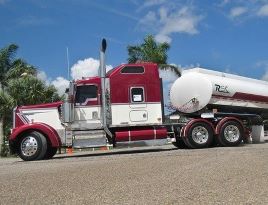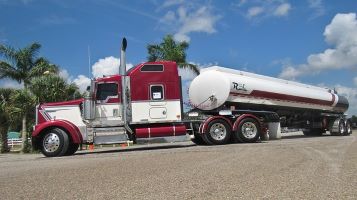Types of Tanker Trailers


Tankers are an important part of transportation, responsible for transporting bulky goods from manufacturers to consumers. As said by experts at Hale Trailer, “there are different types of tanker trailers depending on the goods you want to transport.”
Tanker Trucks
These tankers are responsible for transporting around ¼ of all freight across the US. They come in capacities between 5,500- 11,600 US gallons.
They carry liquid cargo from fuel to consumable liquids from producers to manufacturers. Some of the common tanker trucks are food tankers and fuel tankers.
Food tankers are used by food and beverage companies to transport large amounts of consumable goods like alcohol, liquid dairy products, vegetable oils, fruit juices, corn syrup, vinegar, and sugar alcohols. They are made from stainless steel and are normally cylindrical, and have temperature control options.
Fuel tankers transport different fuels like gasoline, ethanol, diesel, and jet fuel. Just like food tankers, they are also cylindrical.
Since liquid moves rapidly during transportation and some liquids can be dangerous, these tankers come with different compartment designs. The main designs include;
Bulkheads
These are solid dividers that help create separate and smaller storage compartments inside the tanker. This helps reduce the amount of back-and-forth movement of the liquid in the tanker and allows the tanker to carry different types of liquids in every compartment.
However, the bulkheads do not limit side-to-side movements, which could cause the tanker to tip over if the loaders overload it or if the driver makes sudden movements.
Food tankers are the ones that mostly come with bulkheads to enable the transportation of different liquids at the same time.
Baffles
These are similar to bulkheads, but the dividers are angles and have holes in them. These holes help slow down back-and-forth movements.
However, they do not help side-to-side movements, which is why it’s essential for the driver not to make sudden turns on curvy roads. Fuel tankers are the ones that mainly use baffles to make compartments.
Smoothbores
Unlike the baffles and bulkheads, these tankers have no compartments in their long and smooth interior. This makes them the most unstable tanker trucks as the liquid inside moves both side-to-side and back and forth.
However, this design makes it easier for the loaders to sanitize the tankers for transporting foodstuffs. If the driver drives too fast, the back-and-forth movements slow the tankers down.
Braking too sharply could also cause the liquid to slam the front of the trailer and cause a dangerous liquid surge.
Dry Bulk Tankers
Also called pneumatic tankers, these are cylindrical metal tankers that are vacuum-sealed. They have openings on the rear and top and cone-shaped hoppers at the bottom. They have capacities that could hold products between 560-3120 cubic feet.
Most of them are made from steel or aluminum as single compartments. Some of the industries that use these rankers include food, construction, and industrial manufacturing to transport goods like plastic pallets, chemical powders, dairy products like starch and floor, and building materials like sand.
According to Hales Trailer, they are perfect for transporting fine powder because of the compressed air that makes it easy to unload.
Chemical Tankers
These are cylindrical and horizontal lying tankers used to transport flammable goods, chemicals, and corrosive products. Their length ranges from 42-45 feet, and they have volumes from 5,500-11,600 gallons.
Made of stainless steel, some of their transport goods include hydrogen fluoride, chloride, and ammonia.
If you are looking for some of the best tank trailers for sale, make sure you consider these types and pick the ones that suit your requirements. You can search for a perfect tank trailer depending on manufacturers, location, suspension, length, and year of manufacture.




